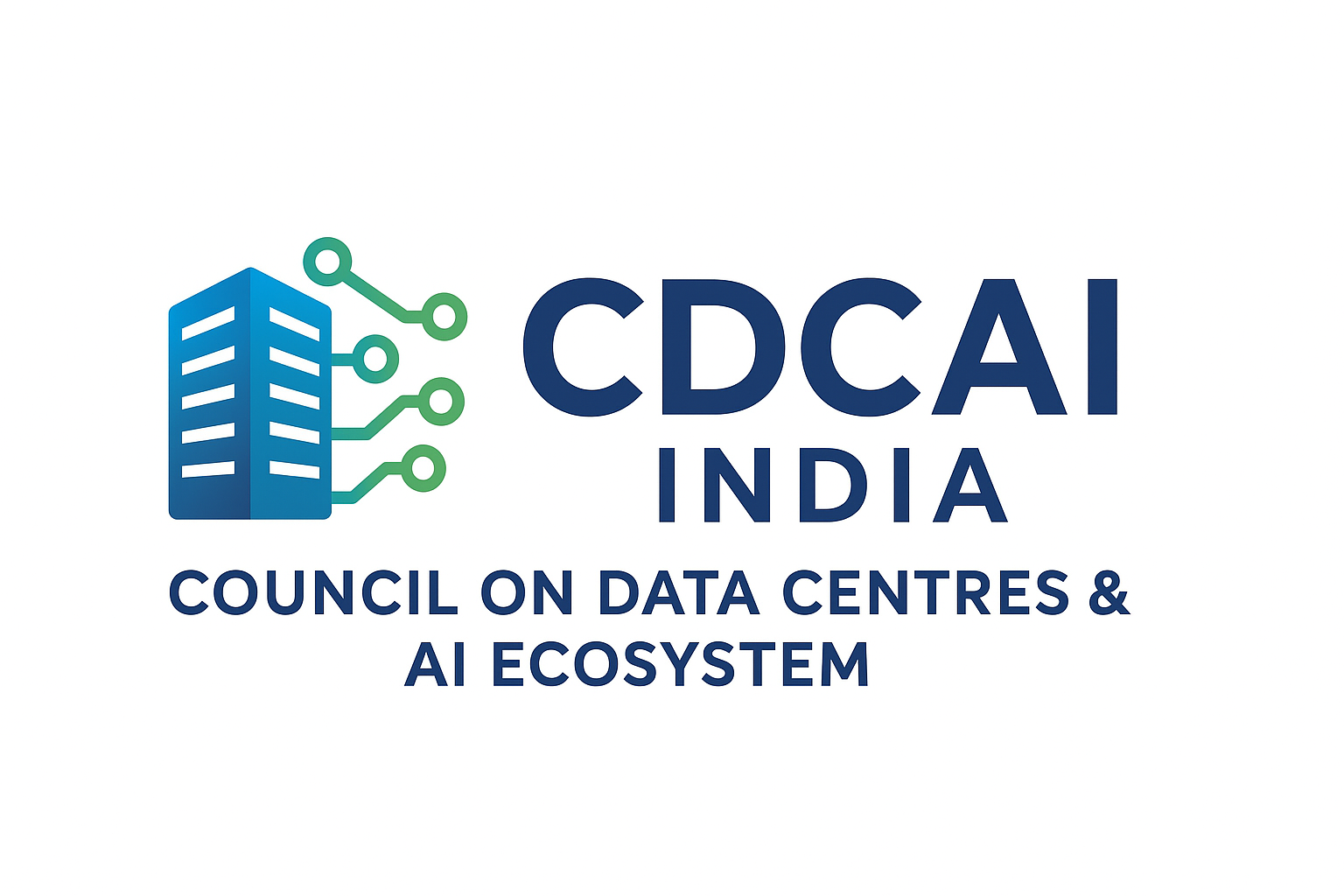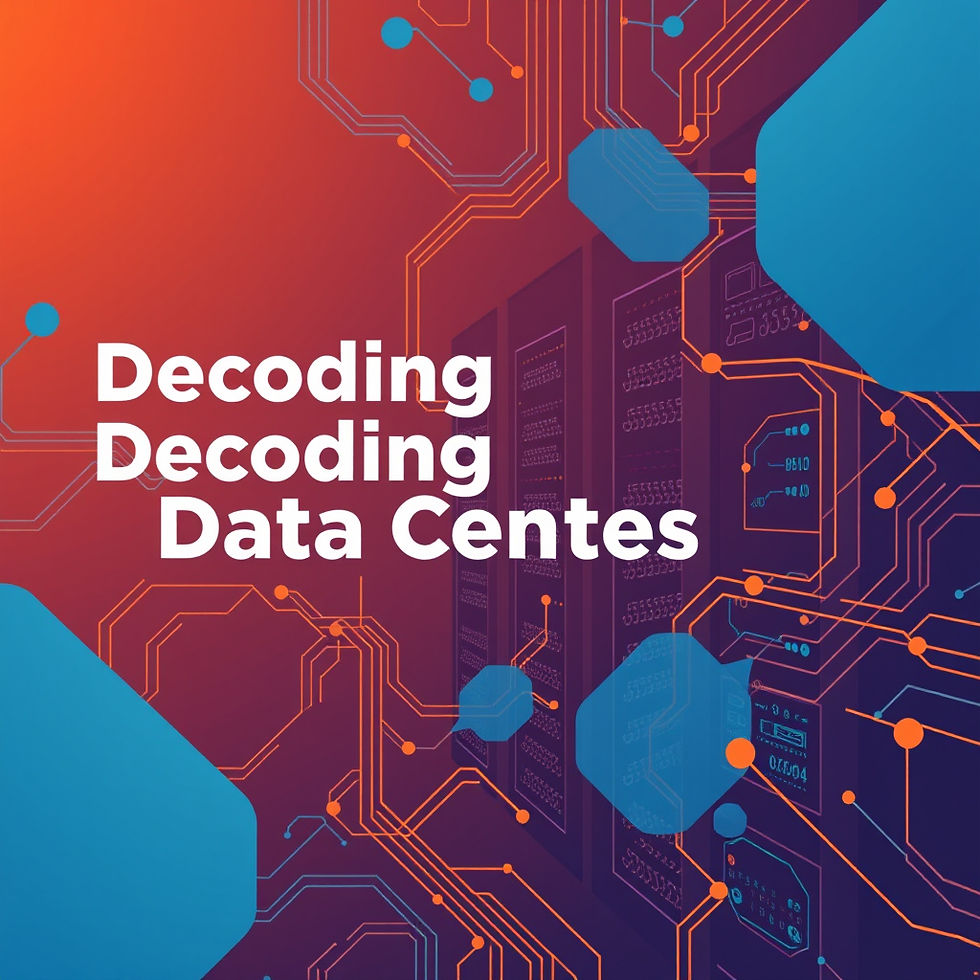Global Data-Centre & AI Market: Practices, Services, Investor Case & What Works Worldwide
- Council on Data Centres & AI Ecosystem in India (CDCAI India)

- Sep 28
- 6 min read
The global data-centre and AI market has entered a decisive growth phase, adding 7–10 GW of new capacity each year and generating hundreds of billions of dollars in value. Hyperscale operators already account for 40–45 % of installed capacity and are projected to approach 60 % by 2030, driving the scale, technology, and financial models that define the sector.
Winning hubs—from Virginia and Silicon Valley to the Nordics, Singapore, and India—combine five essentials: reliable 24×7 clean power, dense fibre and subsea connectivity, pre-approved land, a skilled workforce, and stable regulatory frameworks. These locations enable operators to deliver a broad services portfolio: colocation, interconnection, managed services, high-density GPU clusters for AI, and edge deployments.
International best practices are clear. Leading operators and governments prioritize hour-by-hour carbon-free energy, modular and liquid-cooled designs, single-window time-bound permitting, and transparent sustainability metrics. These measures reduce risk, accelerate timelines, and meet the demands of hyperscale tenants.
For investors, the fundamentals remain compelling: long-term, inflation-linked contracts, high barriers to entry, access to green-bond financing, and strong exit markets through REITs and infrastructure funds. Risks—power availability, regulatory changes, and technology shifts—underscore the need for rigorous due diligence and resilient design.
Governments seeking to capture this opportunity must secure clean-power corridors, enable fast permitting, and create pre-served data-centre parks, while operators should focus on renewable PPAs, modular expansion, robust interconnect ecosystems, and automation-driven efficiency.
As AI workloads accelerate GPU demand, the industry is shifting toward larger, greener, and more automated facilities. The next decade will reward those who align scale, sustainability, and innovation, turning data centres into the backbone of a trillion-dollar digital economy.
1) Market at a glance — scale, momentum, and who’s winning
The global data-centre market is large and expanding rapidly: recent industry estimates put global market value in the hundreds of billions of dollars with high single-digit to double-digit CAGR forecasts depending on segment. Capacity and investment are concentrated in hyperscale operators—cloud giants are building new campuses and GPU farms at a record pace.
Hyperscale players now account for a very large and growing share of global capacity (Synergy and industry trackers show hyperscalers approaching ~40–45% of installed capacity and predicted to reach ~60% by 2030). This shift drives the scale, technology and financial model of the market.
Development activity remains extremely strong: analysts estimate ~7–10 GW of new hyperscale/colocation capacity breaking ground or completing in 2025 alone, representing hundreds of billions USD in asset value and construction finance demand.
2) Where data centres cluster — hubs & why those hubs win
Global DC hubs form where five elements coincide: cheap / reliable (ideally green) power; dense fibre & subsea connectivity; pre-approved land; skilled workforce; and a stable regulatory environment. Leading clusters:
North America (Virginia/Ashburn, Texas, Silicon Valley) — densest interconnection, deep capital pools and hyperscaler home base.
Europe (FLAPD: Frankfurt, London, Amsterdam, Paris, Dublin + Nordics) — strong connectivity, corporate demand and green power options.
Asia-Pacific (Singapore, Tokyo, Seoul, Mumbai / Hyderabad emerging) — capacity driven by regional cloud demand and enterprise growth.
Nordics & some US mountain regions — chosen for low-cost, cold climate cooling and abundant renewables.
Emerging hotspots appear where power & policy come together (e.g., parts of Latin America, Middle East, Africa). Vacancy tightening in core hubs underscores the demand-supply imbalance and pushes investment to new markets.
3) The services portfolio — what data centres sell today
Operators bundle several revenue streams:
Colocation: space, power and basic connectivity (rack / cabinet / cage).
Interconnection & Peering: cross-connects, carrier hotels, Internet Exchanges (a major revenue & strategic moat).
Managed Services / MSP / Hosting / Disaster Recovery: higher-margin IT management and backup services.
Cloud & AI Compute (IaaS/PaaS): hyperscalers deliver elastic compute, storage and specialised GPU/TPU instances.
Edge / Distributed Infrastructure: micro-DCs and edge PoPs for low-latency apps (5G, AR/VR, industrial automation).
Value-adds: compliance, security suites, connectivity to subsea landings, and sustainability / carbon-reporting services.
These services let operators diversify revenue (fixed recurring power/space contracts + consumption-based cloud compute). Demand for AI compute has catalysed a new product: high-density GPU pods / rack leasing / dedicated AI clusters.
4) International best practices — what top operators and governments do
24×7 Clean-Power Strategy — leading hyperscalers push 24×7 carbon-free energy by contracting renewable PPAs combined with storage and flexible generation to match load hourly rather than yearly. This is now a strategic requirement for large tenants.
Pre-Served DC Parks & Plug-and-Play Parcels — governments and states provide serviced land (grid, road, fibre) to remove the “land assembly” risk that stalls projects.
Single-Window, Time-Bound Permitting — fast approvals lower gestation risk and materially reduce cost overruns and financing spreads.
Mandated / Transparent Sustainability Metrics — PUE, WUE and carbon matching disclosures are table stakes for international clients and financiers; some governments tie incentives to these metrics.
Modular, Scalable Design & Liquid Cooling Readiness — modern DCs are designed for incremental MW pods and built with cooling infrastructure that supports future liquid cooling and high rack densities.
5) Why investors find data centres attractive — the fundamental case
Predictable, recurring revenue: long-term power & space contracts (5–15+ years) with creditworthy tenants reduce revenue volatility.
High barriers to entry & scarcity economics: suitable land + grid + fibre in prime metros is limited; large upfront capex and required permits deter new entrants.
Inflation-linked contracts & pass-throughs: power pass-throughs and indexation often protect margins.
Strong refinancing & exit markets: institutional appetite (REITs, infrastructure funds) supports attractive liquidity and yield.
ESG / green bonds market access: green data-centre projects with verified renewables can access lower cost green financing.
Yet risks remain: power availability, regulatory shifts, tenant concentration, technology obsolescence — all underwritten by rigorous due diligence. Recent years saw record development financing activity, reflecting investor confidence but also high capital demand.
6) Technology & operational best practices — what separates top operators
Energy orchestration: integrated PPA + storage + demand response to achieve 24×7 clean power and reduce price volatility.
Telemetry & AIOps: predictive maintenance, energy optimization and automated fault detection reduce OPEX and unplanned downtime.
Liquid cooling & heterogeneous compute stacks: adoption of direct-to-chip cooling for GPUs and specialized accelerators is becoming standard in AI clusters.
Disaster planning & geographic diversity: multi-region active-active designs for resilience; regulatory compliance and independent audits.
Interconnect ecosystems & neutral meet-me rooms: these drive tenant choice and increase stickiness.
7) Social & regulatory considerations globally
Local community & resource footprint: water use, land conversion and visible community benefits are scrutinized; best practice includes waste-heat reuse, community engagement and local hiring.
Data governance & cross-border rules: countries with clear regulations that balance privacy and commercial flows attract more multinational tenants.
Skill pipelines: hubs with high local talent (network engineers, facilities, AI ops) reduce operating risk.
8) Global examples of approaches that work
Nordics: leverage abundant low-cost renewables and cold climate for low cooling costs — attractive for green AI workloads.
US (Virginia): massive interconnection density and enterprise demand — ideal for peering and cloud exchange.
Singapore & Dublin: tight regulatory/regional hub functions with strong connectivity; Singapore manages scarcity through pricing & intensification.
UK & Germany: strong corporate tenancy and high standards for sustainability and efficiency.
(These illustrate that the winning combination differs by strategy: some markets sell connectivity and neutrality, others sell green power or low cost.)
9) What governments and operators must do to win clients (action checklist)
For governments:
Offer single-window permitting + pre-served DC parks.
Support 24×7 clean power corridors and storage policy (BESS, pumped storage).
Provide transparent, time-bound incentive frameworks tied to sustainability KPIs.
For operators / investors:
Secure long-term RE+storage PPAs; design for modular expansion and liquid cooling.
Build strong interconnection ecosystems and managed service portfolios.
Price competitively while preserving margin via energy efficiency and automation.
10) Closing — a global market in transition, led by scale, green energy and AI
The global data-centre industry is maturing: scale and GPU intensity (AI workloads) are reshaping site design, financing, and location economics. Winners will be governments and operators who combine predictable, low-carbon power, fast permitting, plug-and-play land, and automation-led operations—while safeguarding sustainability and community impact. For investors the reward is predictable long-duration cash flows; for operators the opportunity is to sell differentiated services (AI compute, interconnect, managed offerings); for nations, the chance is to capture high value digital industry and jobs.
Powering the world’s digital future, the global data-centre and AI market is moving toward massive scale, 24×7 clean energy, and GPU-driven automation. The next decade belongs to nations and investors who align sustainability, speed, and hyperscale innovation.
Acknowledgment
This article has been developed by the Data Centre Association of India (DCAI), Confederation of Digital Infra & AI Data Centres (CDI&AIDCIndia) in collaboration with the Council on Data Centres & AI Ecosystem in India (CDCAI India) and Data Center, AI, Digital Infra Society Of India. It is intended to serve as a knowledge resource for our members, providing a clear understanding of the fundamentals, opportunities, and evolving landscape of data centres and AI‑driven digital infrastructure in India.
#GlobalDataCentre #AIInfrastructure #Hyperscale #GreenDataCentre #24x7CarbonFree #DigitalEconomy #GPUClusters #InfrastructureInvestment #SustainableTech #FutureOfCompute
CDI&AIDC India: https://whatsapp.com/channel/0029VbBP7zI9cDDiRzNSL028
DCAIDI India: https://whatsapp.com/channel/0029Vb6htCVA2pL5vVlcgE2F






Comments